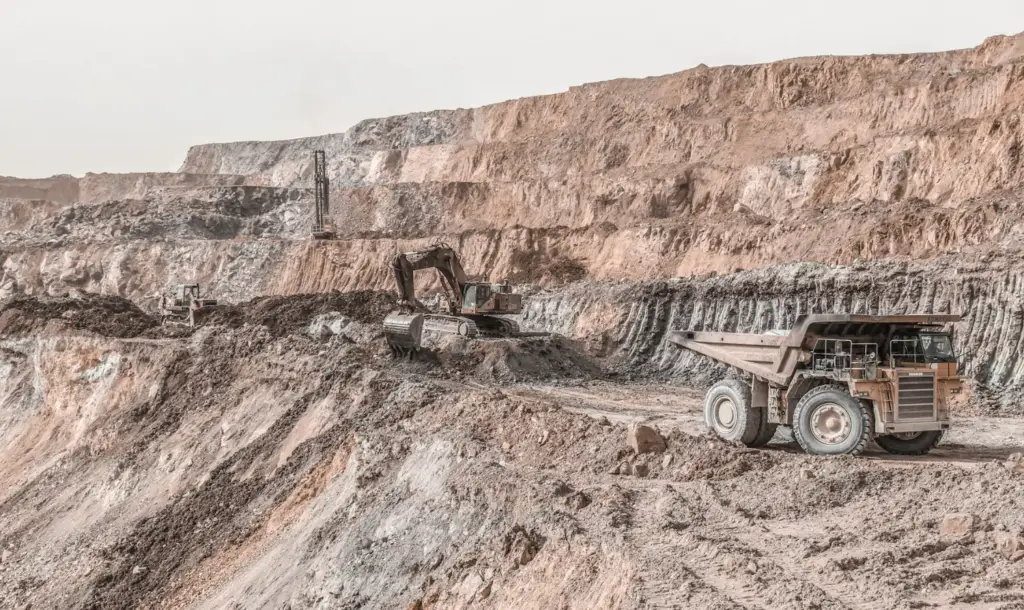What is Quarter Minus?
Quarter Minus is a specific type of crushed rock aggregate widely utilized as a foundational material in various landscaping and construction projects, such as artificial turf and paver installations. The term ‘quarter’ in Quarter Minus refers to the dimension of the largest particles, which do not exceed a quarter of an inch in size. Meanwhile, ‘minus’ indicates the inclusion of smaller particles and fines within the mixture. This unique composition results in a material that offers superior compaction and stability, making it an ideal choice for creating a solid base.
The composition of Quarter Minus consists chiefly of crushed rock, with a blend of larger rock fragments and fine particles. This mixture provides a solid and stable foundation that is essential for supporting structures like pavers and artificial turf. The texture of Quarter Minus is typically gritty, allowing it to lock together tightly when compacted. This characteristic enhances its load-bearing capacity and prevents shifting or settling over time.
When compared to other base materials such as sand or gravel, Quarter Minus stands out due to its excellent compaction properties and stability. While sand can provide a smooth surface, it lacks the structural integrity needed for long-term durability. Gravel, on the other hand, may offer stability but can be prone to shifting without the inclusion of finer particles. Quarter Minus strikes a balance by combining the benefits of both larger and smaller particles, resulting in a robust and reliable base material.
The availability and cost-effectiveness of Quarter Minus further contribute to its popularity among contractors and DIY enthusiasts. It is readily available at most landscaping supply stores and is often more affordable than alternative base materials. This makes it an accessible and budget-friendly option for a variety of applications, from residential landscaping projects to larger commercial installations.
Why Use Quarter Minus for Turf and Paver Installations?
Quarter Minus is widely esteemed in the realm of turf and paver installations for its exceptional properties that yield a sturdy and enduring base. One of the primary advantages of Quarter Minus is its remarkable drainage capabilities. The fine particles facilitate efficient water dispersion, preventing the accumulation of water that could otherwise lead to pooling. This feature not only ensures the longevity of the installation but also mitigates potential damage caused by water retention, such as erosion or foundational instability.
In addition to its drainage efficiency, Quarter Minus excels in creating a compact and stable foundation. Thanks to its fine granules, this material can fill voids and gaps effectively, resulting in a uniformly level surface. The compact nature of Quarter Minus allows for a solid base that can withstand significant weight and traffic, making it an ideal choice for both residential and commercial projects. This compactness is critical for preventing the shifting or settling of pavers over time, thus maintaining the aesthetic and functional integrity of the installation.
Another noteworthy benefit of using Quarter Minus is its ability to inhibit weed growth and soil movement. The tightly packed particles create a barrier that deters weeds from penetrating the surface, leading to a pristine and low-maintenance installation. Additionally, this barrier helps stabilize the soil, preventing it from shifting and thereby preserving the structural integrity of the turf or paver installation.
Overall, Quarter Minus offers a multifaceted range of benefits that make it the optimal choice for turf and paver installations. Its superior drainage properties, ability to create a solid and level foundation, and effectiveness in preventing weed growth and soil movement collectively contribute to a durable, stable, and low-maintenance surface. By choosing Quarter Minus, installers can ensure a high-quality and long-lasting result for their projects.
How Much Quarter Minus to Use and Importance of Ground Preparation
Determining the correct amount of Quarter Minus is pivotal for the success of any turf or paver installation project. To accurately calculate the required quantity, it is essential to consider both the area and the desired depth of your installation. Start by measuring the length and width of the installation area to determine the total square footage. For example, if you have a 10×10 foot area, you have 100 square feet. Next, decide on the depth of the Quarter Minus layer. Typically, a 2-4 inch depth is recommended for most installations; however, this can vary based on specific project requirements.
Once you have these measurements, use the following formula to estimate the amount of Quarter Minus needed: Total cubic feet = (Length in feet x Width in feet x Depth in inches) / 12. For instance, for a 100 square foot area with a 3-inch depth, the calculation would be (100 x 3) / 12 = 25 cubic feet. This simple calculation helps ensure you order the right amount of material, avoiding both shortages and excesses.
Ground preparation is equally important and involves several critical steps. Begin with thorough excavation, removing all debris and organic material to create a clean base. Next, level the ground meticulously to ensure an even surface, which is crucial for the stability of the installation. After leveling, compact the ground using a mechanical compactor. This step is vital as it prevents future settling and shifting of the pavers or turf.
Proper ground preparation also involves addressing common pitfalls. Avoid skimping on the excavation depth, as a shallow base can compromise the installation’s durability. Ensure that the ground is fully compacted to eliminate air pockets, which can lead to uneven surfaces over time. By following these detailed guidelines and avoiding common mistakes, you can achieve a professional-grade installation that stands the test of time, providing a stable and aesthetically pleasing result.


